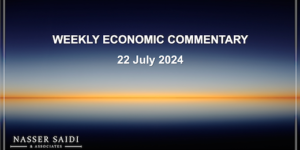This report “An Assessment Of The Progress Toward GCC Monetary Union” presents the assessment, as of July 31st 2008, of the convergence process for the Gulf Monetary Union (GMU). The convergence criteria – modeled on the Maastricht criteria that guided the European Monetary Union -were implicitly endorsed by the Supreme Council of the GCC at its 27th session held in Riyadh in December 2006, although the precise definition of most variables has not been disclosed. Using available official and market data, this report shows that as of July 31st 2008, only three countries, Saudi Arabia, Bahrain and Oman meet all the criteria (Omani authorities have reiterated their wish not to join the GMU at inception). Qatar and the UAE have inflation rates which exceed the inflation target, while Kuwait pegs to a currency basket and not to the US dollar.
Moving forward on the GMU
Moving forward, there are three important policy issues that need to be addressed:
1. Inflation should be the priority item on the policy agenda. While a US$ exchange rate peg policy provided for monetary and price stability in the past, structural changes, increased economic and trade diversification with Asia (increasingly the main trade and investment partner) and the weakness of the US $ on international markets, provide the rationale for a change in policy towards inflation targeting, with monetary policy geared to maintaining inflation within an announced target range.
2. The GCC countries will need to invest in building their statistical capacity, in order to provide harmonized, comparable economic and financial data, to support the GMU and The Gulf Common Market.
3. The GMU, if it is to be achieved and serve its purpose, needs to be supported by investments in financial infrastructure (including legal and regulatory), payment systems and the development and linkage of money markets and capital markets.
Another concern is the relevance of the convergence criteria for the GCC region. For example, while the main stumbling blocks on the path to the European Monetary Union were related to fiscal consolidation, in the GCC, public finances display sizeable surpluses and the short term interest rates, given the peg to the dollar, cannot be much different. In compiling this report, the collection of updated official figures has been a major hurdle. In the absence of a precise official definition, for example in the case of the interest rate criterion, we selected the concept that is most widely used on an international basis. It must also be pointed out that the homogeneity of the data across countries cannot be ensured. In contrast to the European Union, the GCC countries lack a supranational statistical agency, like Eurostat, which provides detailed definitions for variables such as public debt or government budget deficits and periodically conducts audits of the official figures. Furthermore a CPI definition valid for all GCC countries has not been provided. Finally, there is a wide difference in the ability of each country to report data in a timely and accurate fashion, an issue that needs to be addressed before the GMU launch.





